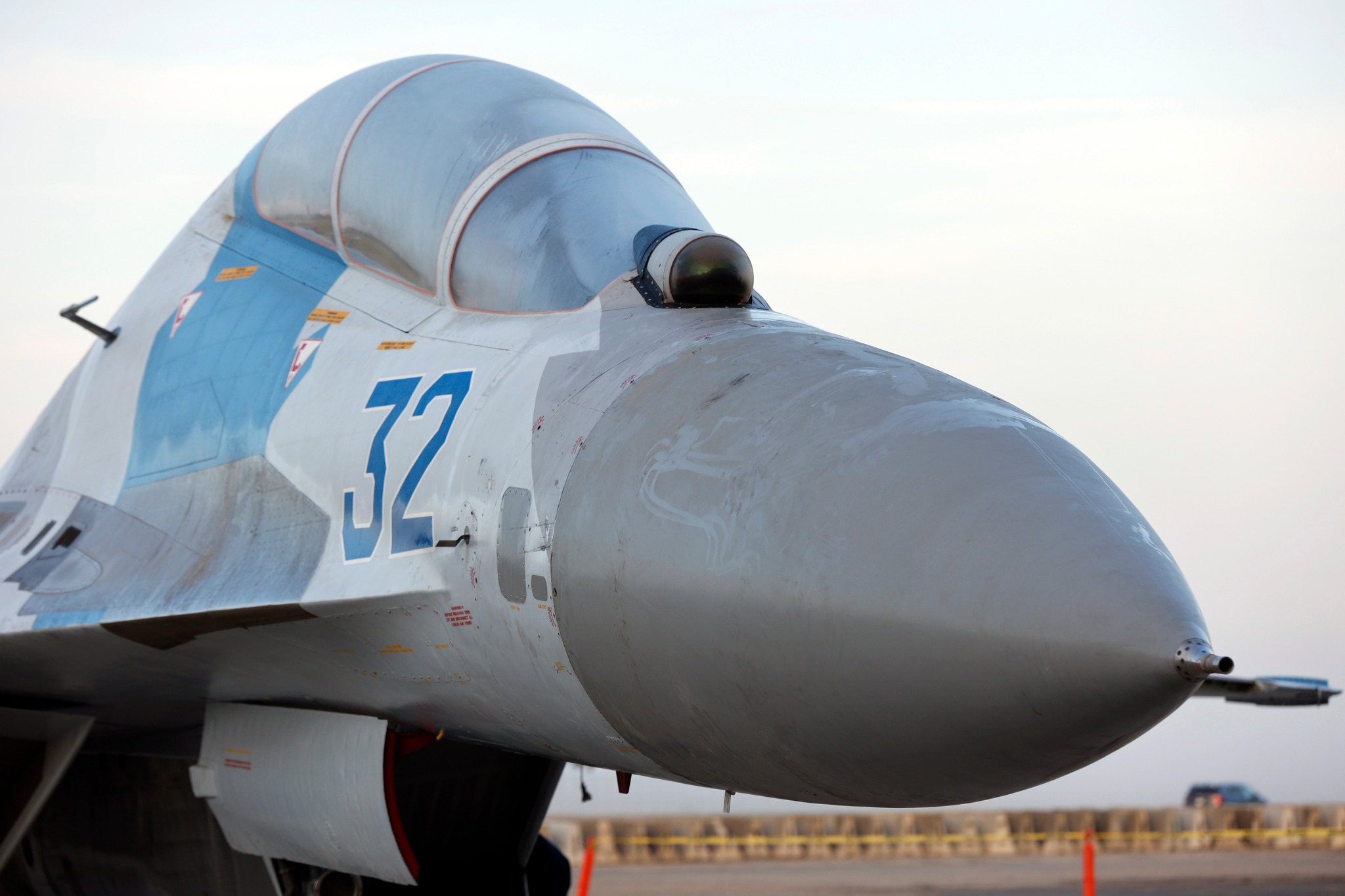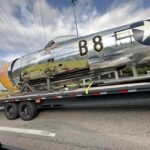Last week, social media went abuzz with the news that the National Museum of The United States Air Force acquired an example of a Sukhoi Su-27 (NATO reporting name Flanker), with the museum announcing that the Flanker is set to go on display in the museum’s Cold War Gallery this fall. As one can imagine, there is quite a background story behind how an example of an aircraft designed to counteract the McDonnell-Douglas F-15 Eagle and the Grumman F-14 Tomcat ended up in the NMUSAF.
Designed during the 1970s, the Su-27 was introduced into the Soviet Air Force during the mid-1980s, but by then, the USSR was in decline and would ultimately collapse on December 26, 1991. This would lead to its successor state, the Russian Federation, developing a variety of subsequent designs to complement the original, such as the Su-30, the Su-33, Su-34 strike aircraft, and Su-37, among others. Further designs included carrier-based variants and the Shenyang J-11, which was built for and flown by the People’s Liberation Army Air Force. Additionally, there remained Flankers in service with other nations across the world, from Angola to Vietnam, and from Indonesia to Kazakhstan. While the Su-27 remains fairly common in several post-Soviet states, hundreds of Flankers have been used by both sides of the current Russo-Ukraine War in air-to-air engagements or in supporting ground offensives. While the outcome of the ongoing war remains to be seen at this point, it seems likely the Flanker will remain in the skies for years to come.
In the United States, there are known to be at least four Flankers, which were imported to the United States to be used for adversarial training by contractor pilots. These contractor pilots use the Flanker to allow US fighter pilots to gain valuable first-hand experience in mock engagements with an opposing state’s aircraft. These mock engagements typically take place at Groom Lake and Tonopah Test Range over central Nevada. Additionally, Soviet-manufactured aircraft have been used in radar tests to evaluate the effectiveness of American radar units. The first two aircraft, two Su-27Ps, were shipped from Belarus in 1995, while two more aircraft were shipped from Ukraine. The NMUSAF’s new Flanker is from the latter pair.
Constructed in 1988 as construction number 96310408027(f/n 05-02), this particular Flanker is a Su-27UB operational trainer (also known as a Flanker-C). It was flown by the Ukrainian Air Force’s 831st Tactical Aviation Brigade (which had previously been called the 831st Fighter Aviation Regiment while it was part of the Soviet Air Force) with the code Blue 61, based out of Myrhorod Air Base, near Myrhorod (known by its Russian name of Mirgorod during the Soviet era), in Poltava Oblast, southeast of Kyiv. Shortly after its decommissioning, Blue 61 was acquired by the American contractor Pride Aircraft in Rockford, Illinois, along with another Flanker-C of the 831st, Blue 66 (construction number 96310418210, f/n 11/05). The two aircraft were completely overhauled in Zaporizhia, Ukraine from 2007 to 2008, made their first post-overhaul flights in August of 2008, and were soon disassembled and flown to the United States aboard an Antonov An-124 Ruslan transport plane (NATO reporting name Condor). Reassembly by Pride Aircraft began in early 2009, with the Saturn AL-31 engines being zero-timed and the cockpit instruments converted to Western standards to aid flight instruction and operation. The two aircraft were registered with the FAA as N131SU (c/n 96310418210) and N132SU (c/n 96310408027), with N131SU becoming Blue 31 and N132SU Blue 32, though they both kept the light gray, dark blue and light blue camouflage pattern typically seen on Ukrainian Flankers.
Soon after their respective overhauls, they were used by Tactical Air Support, and their logo appeared on the tail fins of both aircraft. Later on, Blue 31 and Blue 32 were offered for sale by Pride Aircraft, with the option for either a combined sale or for individual sale. In 2011, Pride Aircraft sold both aircraft and they were officially noted in FAA records as being owned by Meridian Inc. in Wilmington, Delaware, but for the most part, both aircraft were kept on a low profile, with the lack of information leading to all kinds of speculation as to their disposition.
It came as quite a surprise, therefore, when Blue 32 was seen parked in front of the storage hangars at Wright-Patterson Air Force Base that have been reserved for the National Museum of the USAF. The museum has been keeping its card close to its chest, but with them pushing to place the aircraft on display in their Cold War Gallery this fall, it seems likely that more information will be made public by that time. With the current war in Ukraine, it would be especially interesting if the museum would return the aircraft to its original livery from the 831st Tactical Aviation Brigade, considering the Brigade is involved in the ongoing Ukrainian counter-offensives. As further updates become available to us in the future, we will share them with our readers.


































